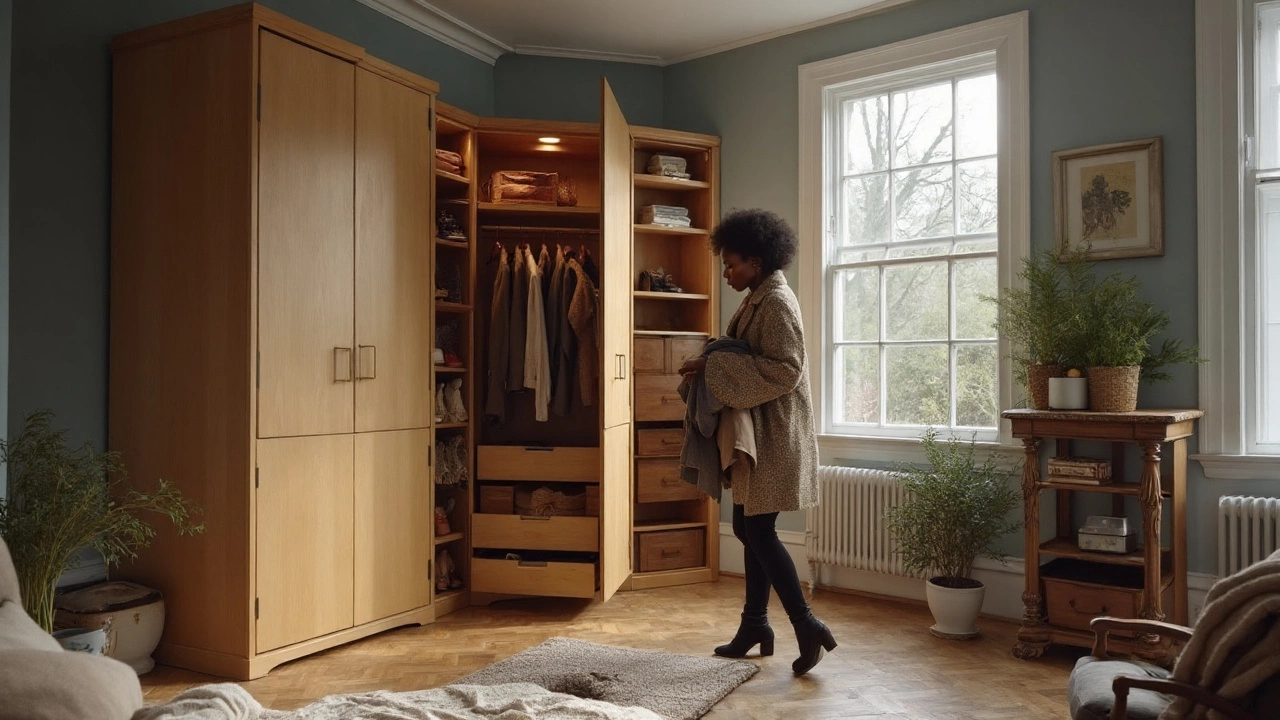
Wardrobe vs Armoire: Differences, Dimensions, and How to Choose
Wardrobe vs armoire explained: size, style, storage, and use. See what fits your room, how to measure, and how to choose the right piece for 2025.
When you’re setting up a bedroom, the words “wardrobe” and “armoire” often pop up as if they mean the same thing. They don’t. A wardrobe is usually a built‑in or freestanding unit with hanging space and shelves, while an armoire is a tall, freestanding cabinet that can hold clothes, linens, or even a TV. Knowing how they work helps you pick the piece that actually fits your room and your needs.
Wardrobes are designed mainly for clothing. Most have a hanging rod, a few shelves, and sometimes a drawer. Because they’re built for hanging, they’re great for suits, dresses, or any garment that needs to stay wrinkle‑free. Many modern wardrobes come with sliding doors, which save space in small rooms. If you have a dedicated closet area or a walk‑in, a wardrobe can blend right in and feel like part of the architecture.
Another perk is flexibility. You can add extra shelves or organizers, and some wardrobes let you change the interior layout without tools. This means you can adapt the piece as your storage needs evolve, whether you’re swapping out kids’ uniforms for a partner’s work wardrobe.
An armoire is more of a statement piece. It’s tall, often has decorative panels, and usually includes both hanging space and shelves or drawers. Because it’s freestanding, you can move it from room to room or use it in a space without a built‑in closet. This makes it perfect for apartments, guest rooms, or homes where the bedroom layout changes frequently.
Armoire doors are typically hinged, which adds a classic look but needs clearance to open fully. If you like a traditional vibe or want a piece that doubles as décor, an armoire fits the bill. Many people also use the lower part for blankets, shoes, or even a mini home office setup, turning it into a multi‑purpose storage unit.
Choosing between the two comes down to three questions: Do you need more hanging space or extra shelves? Do you have room for sliding doors or do you prefer hinged doors? And finally, do you want a piece that can be moved easily? If you answered yes to the first two, a wardrobe is likely the smarter pick. If portability and style matter more, go with an armoire.
In practice, try measuring your room first. A standard wardrobe is about 60‑70 cm wide, while an armoire can be 80‑100 cm. Make sure there’s enough clearance for doors to open and for you to walk around the piece. Also, think about the material – solid wood feels sturdy but costs more; laminate or MDF offers the look for less money.
Bottom line: both wardrobes and armoires solve storage problems, but each does it in its own way. Pick the one that matches your space, your style, and how you organize your clothes, and you’ll end up with a bedroom that looks good and works better.

Wardrobe vs armoire explained: size, style, storage, and use. See what fits your room, how to measure, and how to choose the right piece for 2025.